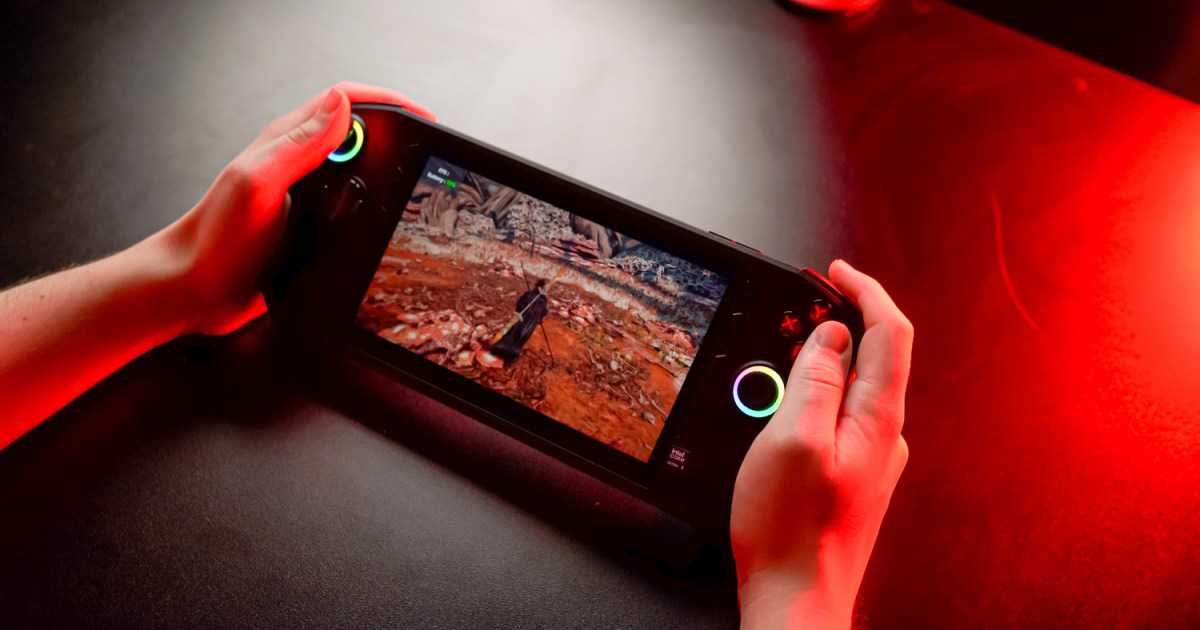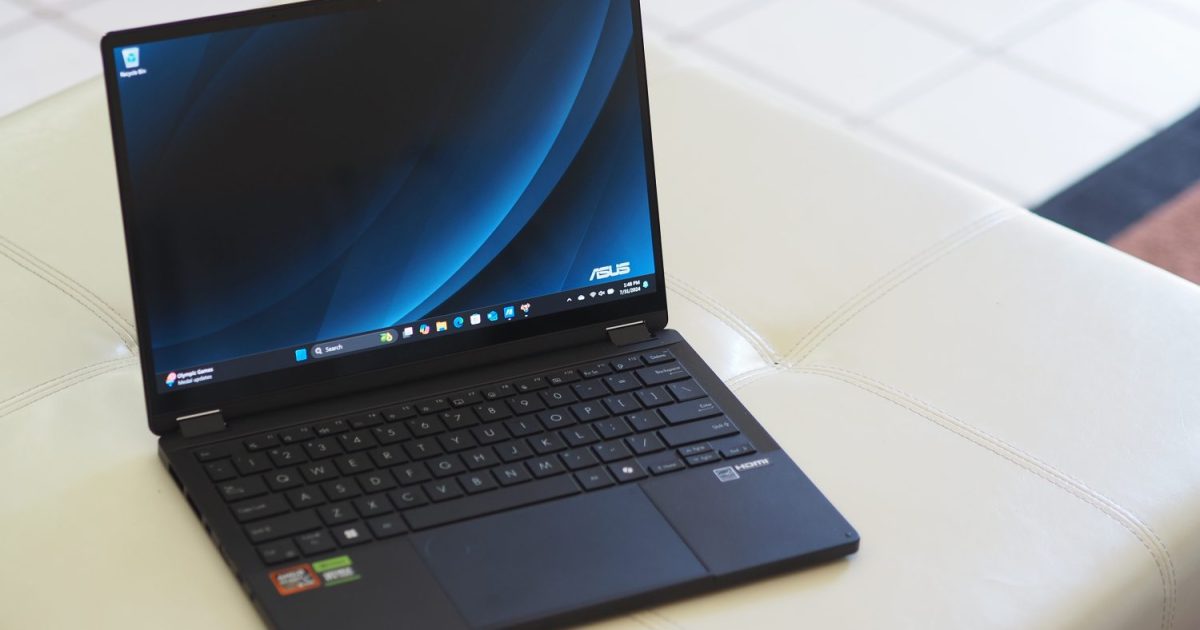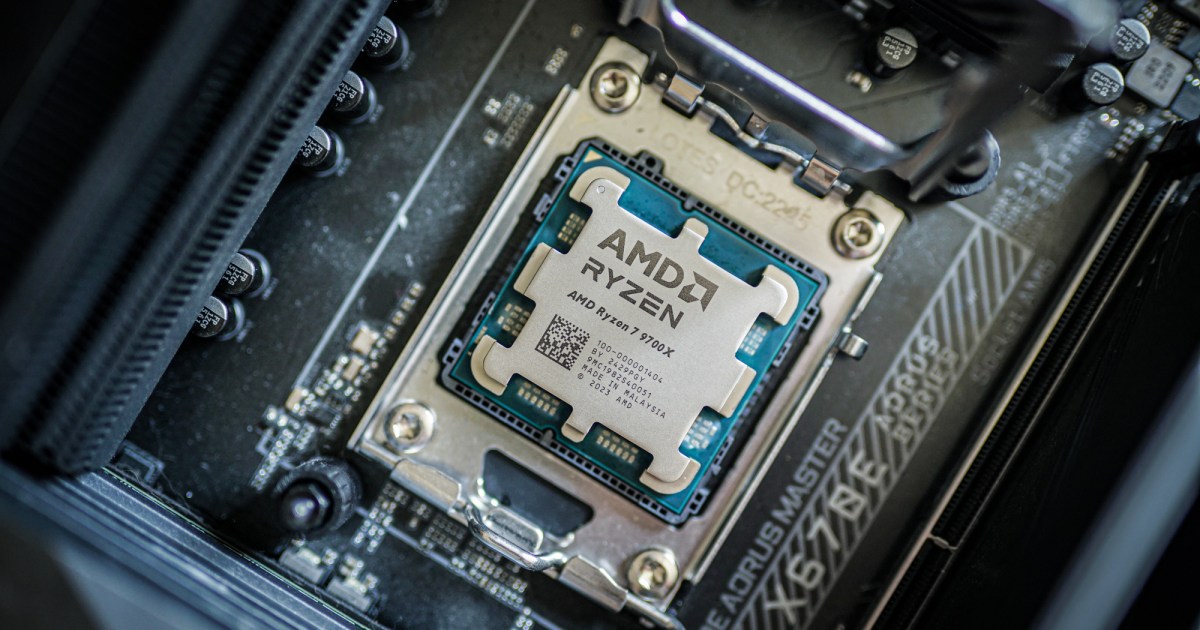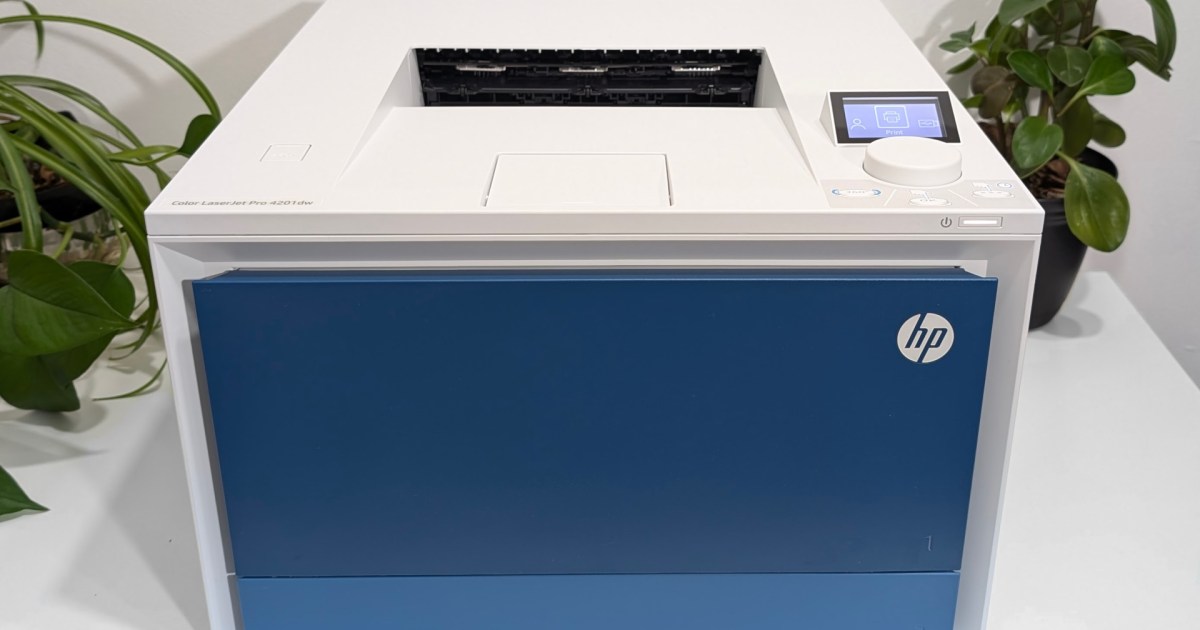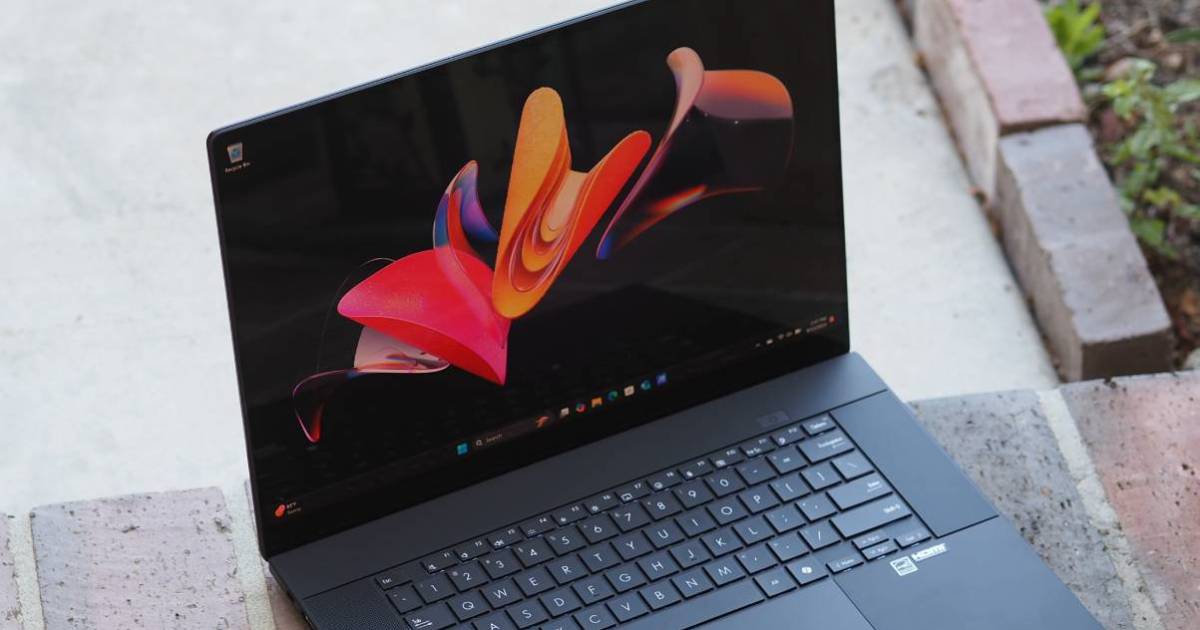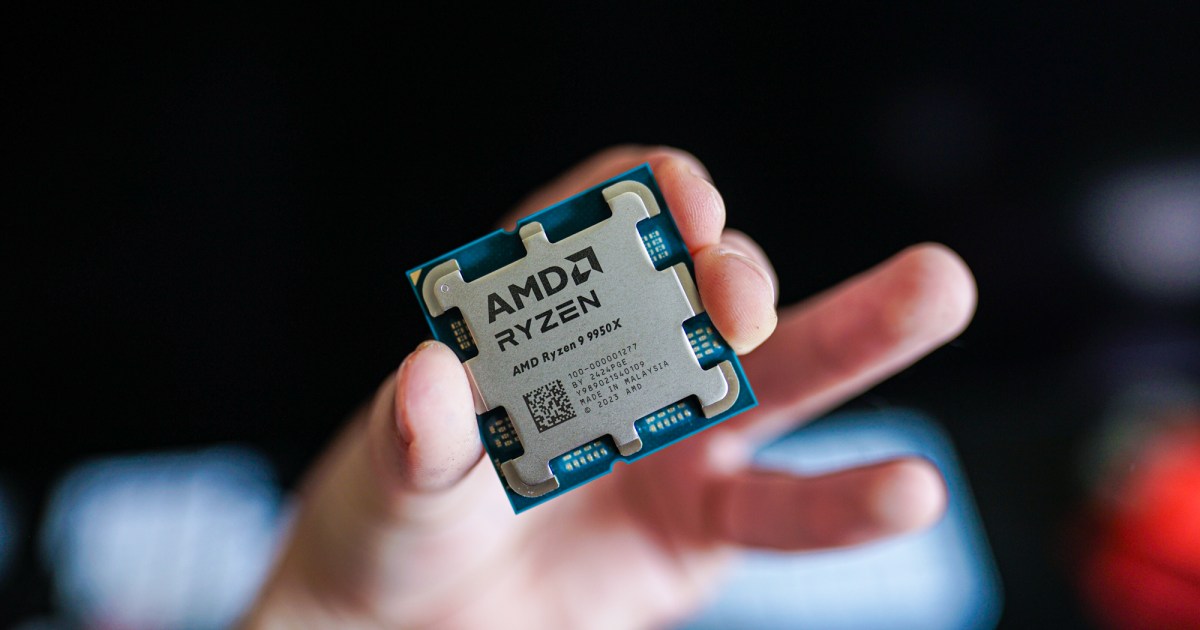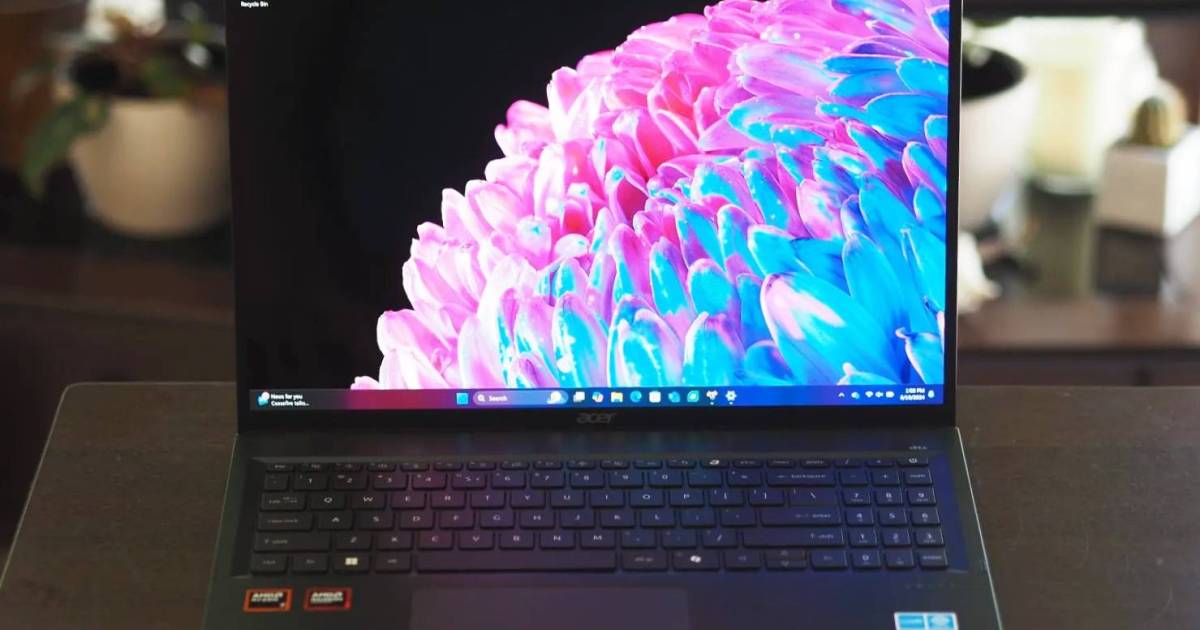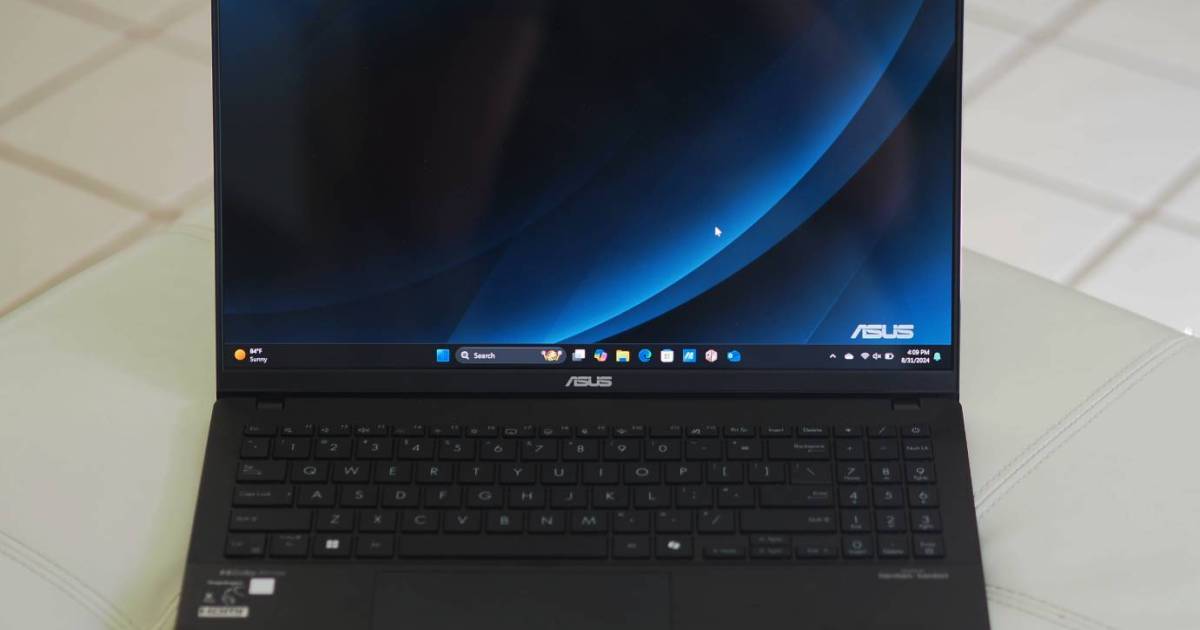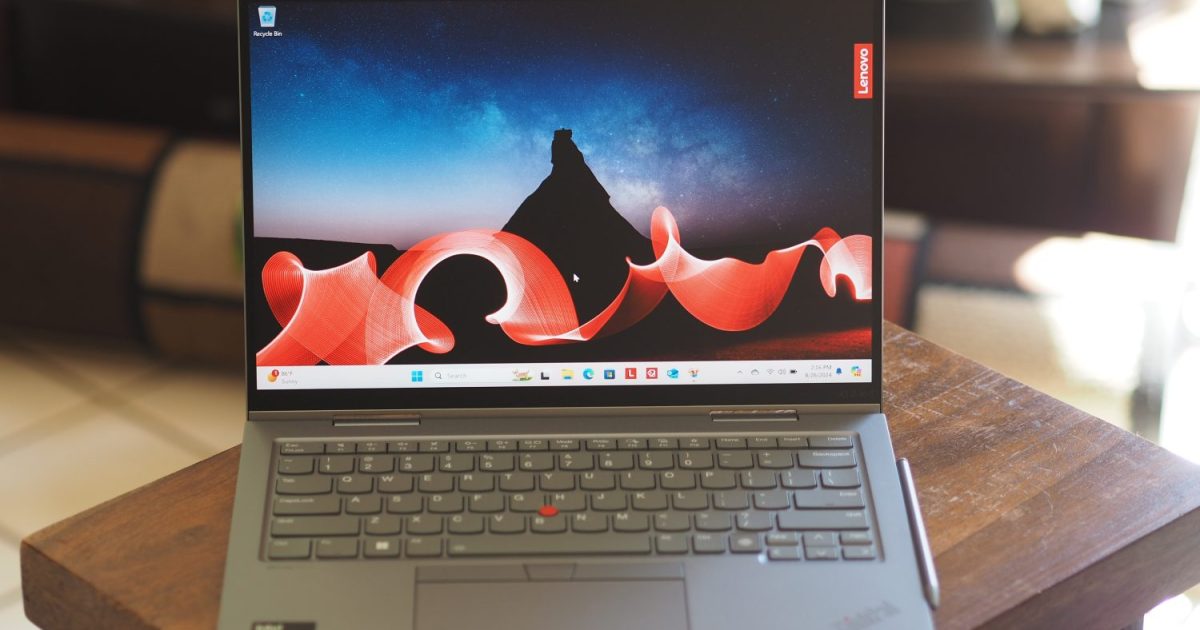The MSI Claw handheld gaming PC entered a market dominated by the Steam Deck and ROG Ally, promising Intel-powered performance. Unfortunately, even after several updates, the Claw still falls short of expectations. While performance has improved since launch, it’s still not enough to justify the higher price and inferior battery life compared to competitors.
Under the Hood: Intel Inside, But Not Delivering
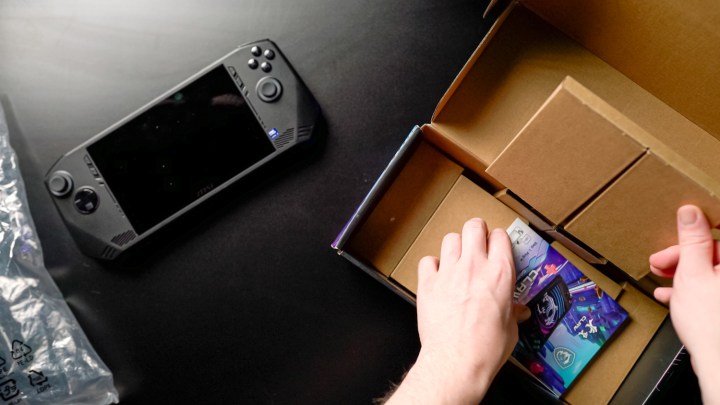 Someone unboxing the MSI Claw.The MSI Claw, unboxed. (Jacob Roach / MaagX)
Someone unboxing the MSI Claw.The MSI Claw, unboxed. (Jacob Roach / MaagX)
The Claw’s main selling point is its Intel Core Ultra CPU, available in the Core Ultra 5 135H and Core Ultra 7 155H. Our review unit featured the Core Ultra 7 155H, which is the recommended configuration if you’re considering this device (though we advise against it). Both models come with 16GB of RAM, and you can choose between 512GB or 1TB of storage (the latter costing an extra $50). The M.2 2230 SSD is user-replaceable if you want to upgrade later.
The pricing is a significant issue. The Core Ultra 5 135H model starts at $700, the same price as the ROG Ally and Lenovo Legion Go, both of which pack the more powerful AMD Z1 Extreme. The Core Ultra 7 155H bumps the price to $750, and the 1TB version costs $800. This makes the Claw significantly more expensive than the Steam Deck and Steam Deck OLED.
| Model | Claw A1M-052US | Claw A1M-051US | Claw A1M-050US |
|---|---|---|---|
| APU | Core Ultra 5 135H | Core Ultra 7 155H | Core Ultra 7 155H |
| RAM | 16GB | 16GB | 16GB |
| Storage | 512GB | 512GB | 1TB |
| Ports | 1x USB-C w/ Thunderbolt 4, 1x 3.5mm, 1x Micro SD | 1x USB-C w/ Thunderbolt 4, 1x 3.5mm, 1x Micro SD | 1x USB-C w/ Thunderbolt 4, 1x 3.5mm, 1x Micro SD |
| Wireless | Wi-Fi 7 | Wi-Fi 7 | Wi-Fi 7 |
| Screen | 1080p IPS, 120Hz | 1080p IPS, 120Hz | 1080p IPS, 120Hz |
| Price | $700 | $750 | $800 |
Besides the Intel CPU, there’s little to justify the premium. The 7-inch, 1080p, 120Hz IPS display is decent, but the Lenovo Legion Go offers a higher resolution, and the Steam Deck OLED boasts superior OLED technology.
Design: A Familiar Feel, Premium Controls
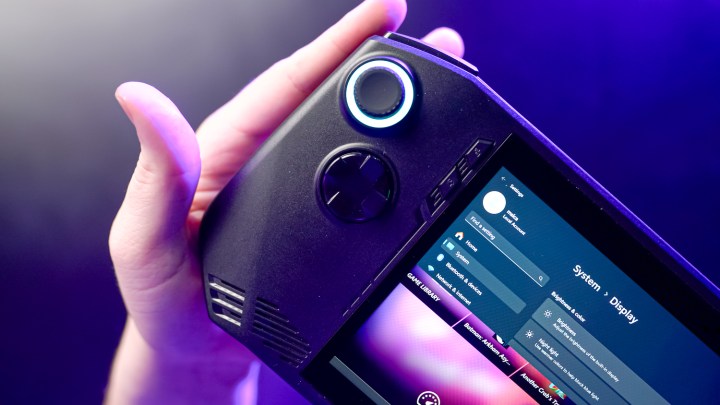 The edge of the MSI Claw handheld.A close-up of the MSI Claw’s design. (Jacob Roach / MaagX)
The edge of the MSI Claw handheld.A close-up of the MSI Claw’s design. (Jacob Roach / MaagX)
While the Claw’s design is reminiscent of the ROG Ally, it features premium buttons and sticks, a significant improvement over the Ally’s cheaper-feeling controls. The Hall Effect triggers and sticks are smooth and responsive, and the D-pad lacks the clicky feel found on the Ally.
The Claw includes a Micro SD card slot, a 3.5mm headphone jack, a USB-C port with Thunderbolt 4 for charging and external GPU connectivity (a plus over the Ally’s proprietary XG Mobile solution), and a fingerprint sensor-enabled power button for Windows Hello.
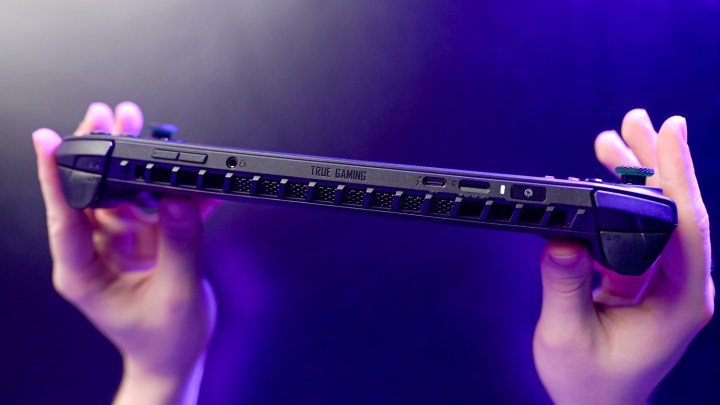 Ports on the MSI Claw handheld.The ports available on the MSI Claw. (Jacob Roach / MaagX)
Ports on the MSI Claw handheld.The ports available on the MSI Claw. (Jacob Roach / MaagX)
The dual 2-watt speakers are surprisingly good, delivering full and rich sound. The overall build quality is solid, and the handheld feels comfortable in the hands. MSI clearly put effort into the design and controls, which makes the performance shortcomings even more disappointing.
Performance: Disappointing, Even After Updates
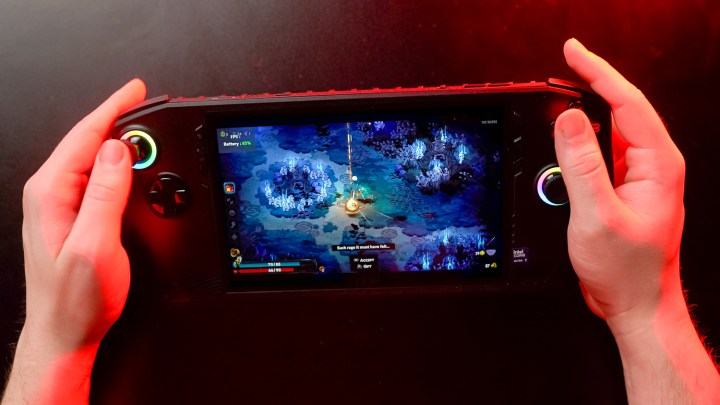 Hades 2 running on the MSI Claw.Hades 2 running on the MSI Claw. (Jacob Roach / MaagX)
Hades 2 running on the MSI Claw.Hades 2 running on the MSI Claw. (Jacob Roach / MaagX)
Despite BIOS and driver updates claiming significant performance boosts, the Claw still lags behind the competition. It consumes more power while delivering lower frame rates than the ROG Ally, even when running at the same resolution.
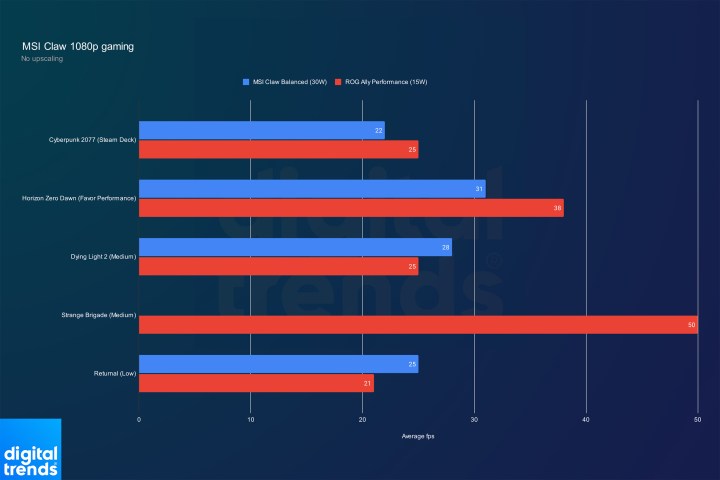 Performance for the MSI Claw at 1080p.1080p performance comparison. (Jacob Roach / MaagX)
Performance for the MSI Claw at 1080p.1080p performance comparison. (Jacob Roach / MaagX)
In Balanced mode, the Claw struggles to keep up with the ROG Ally in most titles. While it sometimes achieves higher average frame rates, performance is inconsistent, with significant stuttering and low minimum frame rates.
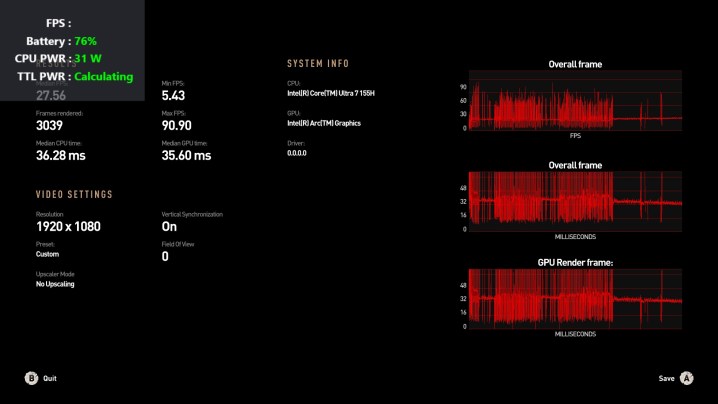 Results for the MSI Claw in Dying Light 2.Dying Light 2 performance results. (Jacob Roach / MaagX)
Results for the MSI Claw in Dying Light 2.Dying Light 2 performance results. (Jacob Roach / MaagX)
Even at lower resolutions, the Claw underperforms, falling behind even the older Steam Deck OLED in many games. The high power consumption is particularly concerning, as it impacts battery life significantly.
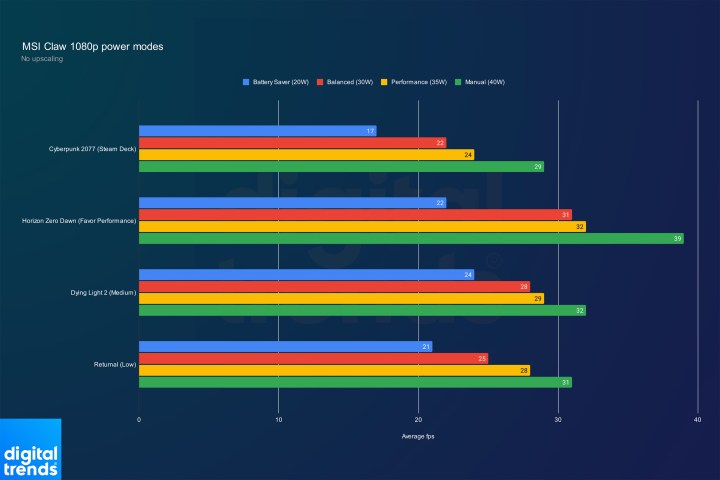 Performance across power modes on the MSI Claw.Performance across different power modes. (Jacob Roach / MaagX)
Performance across power modes on the MSI Claw.Performance across different power modes. (Jacob Roach / MaagX)
Retesting: Improvements, But Still Not Enough
After further BIOS and driver updates, the Claw showed noticeable performance gains, especially in lower power modes. However, these improvements only bring it closer to the competition, not ahead of it. The ROG Ally X, for example, offers significantly better performance for around the same price.
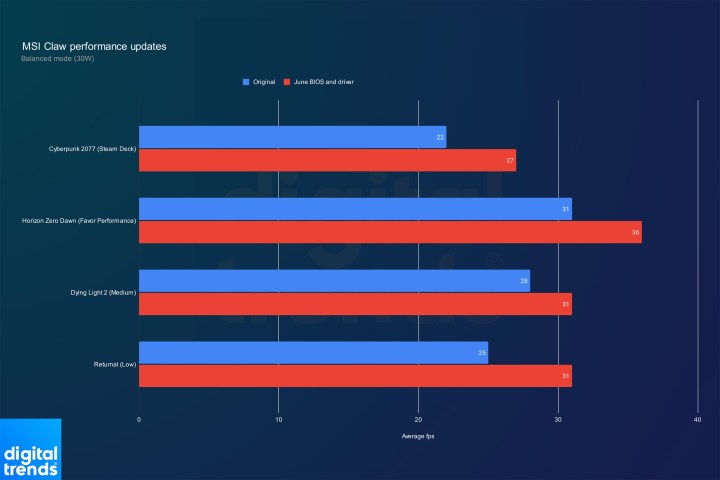 MSI Claw performance in Balanced mode.MSI Claw performance in Balanced mode after updates. (Jacob Roach / MaagX)
MSI Claw performance in Balanced mode.MSI Claw performance in Balanced mode after updates. (Jacob Roach / MaagX)
Software: Center M Shows Promise, But Needs Work
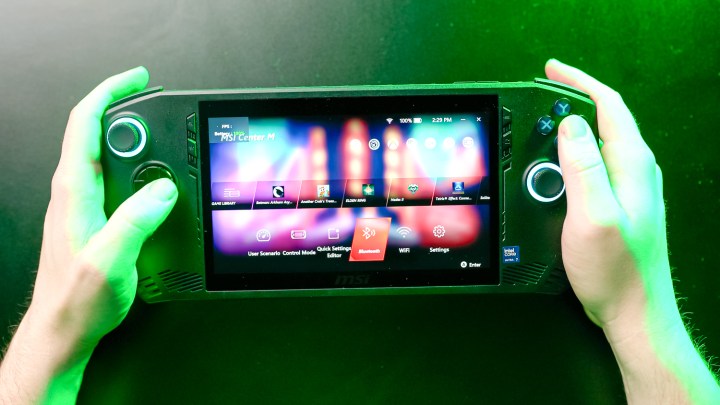 Power modes in the MSI Center M app.Power modes within MSI Center M. (Jacob Roach / MaagX)
Power modes in the MSI Center M app.Power modes within MSI Center M. (Jacob Roach / MaagX)
MSI’s Center M software is a fast and responsive utility for launching games and managing settings. However, it’s not without its flaws. The interface is clunky, and some features, like the performance overlay and resolution switching, are buggy. While Center M has potential, it needs further refinement.
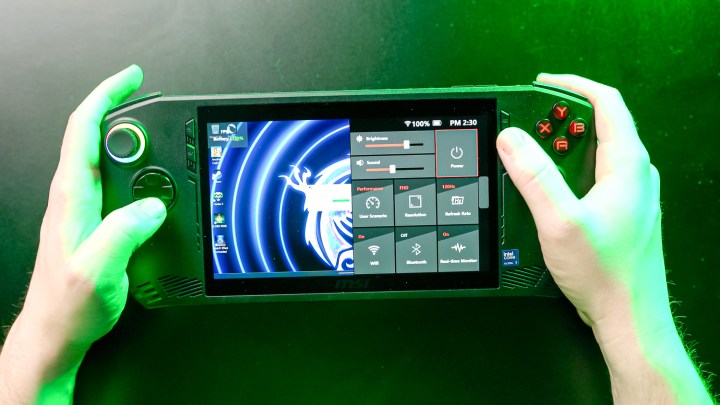 MSI Center M pulled over Windows.MSI Center M overlayed on Windows. (Jacob Roach / MaagX)
MSI Center M pulled over Windows.MSI Center M overlayed on Windows. (Jacob Roach / MaagX)
Battery Life: A Larger Battery Doesn’t Solve the Problem
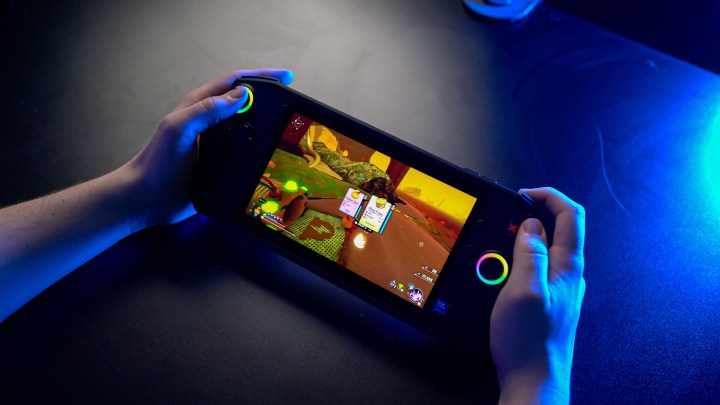 Another CrabA crab chilling on the beach. (Jacob Roach / MaagX)
Another CrabA crab chilling on the beach. (Jacob Roach / MaagX)
Despite its larger 53 watt-hour battery, the Claw’s power-hungry CPU results in disappointing battery life. In our testing, it struggled to last more than two hours in demanding games, even with power-saving settings enabled. The battery capacity reporting is also inaccurate, which is a concern.
Conclusion: Still Not Ready for Prime Time
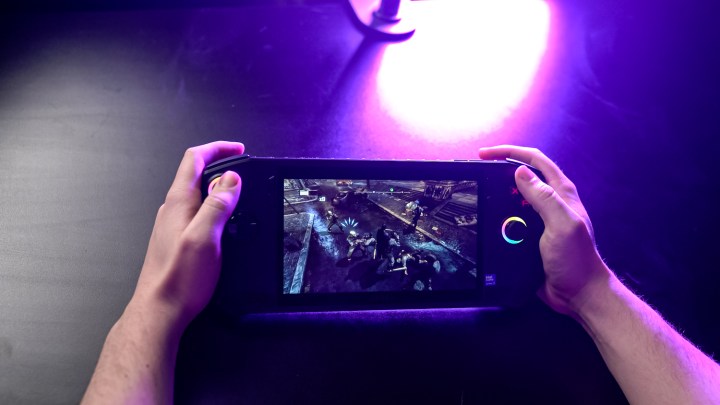 Batman Arkham City running on the MSI Claw.Batman Arkham City running on the MSI Claw. (Jacob Roach / MaagX)
Batman Arkham City running on the MSI Claw.Batman Arkham City running on the MSI Claw. (Jacob Roach / MaagX)
The MSI Claw shows some improvements since launch, but it’s still not a recommendable device. The performance is underwhelming, the battery life is short, and the software needs work. While the build quality and controls are good, they don’t compensate for the fundamental issues. For the price, there are much better options available.



